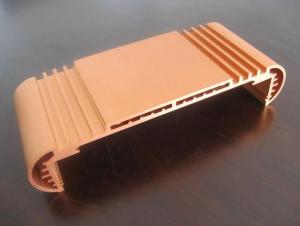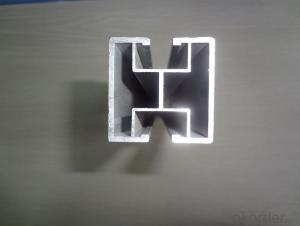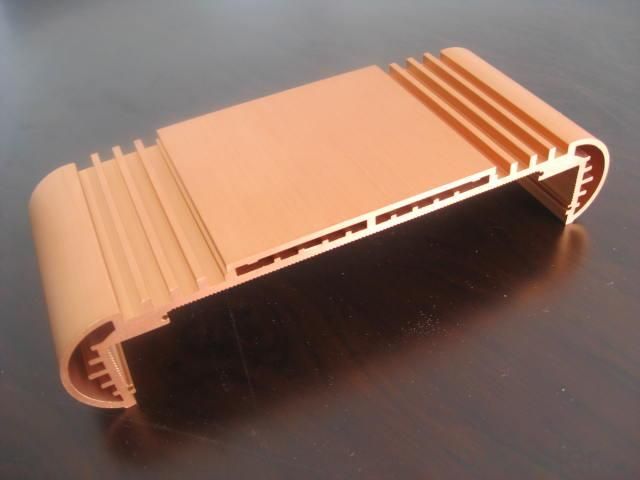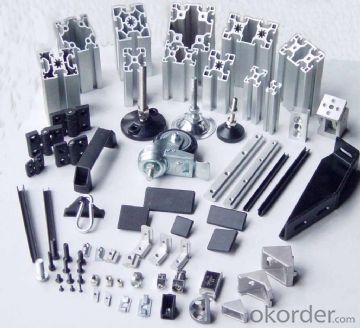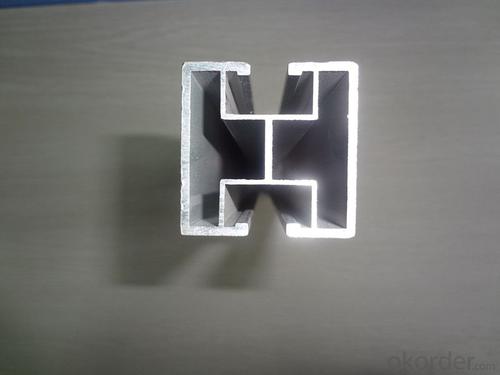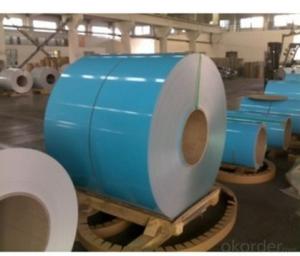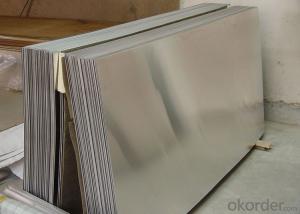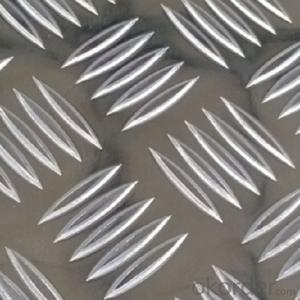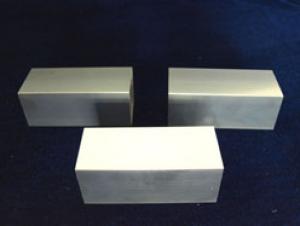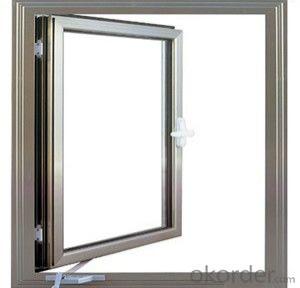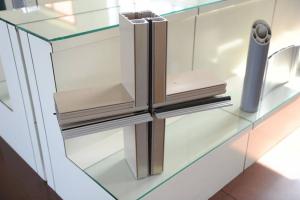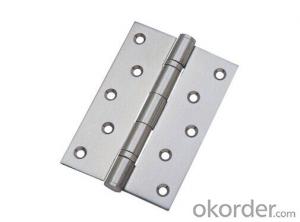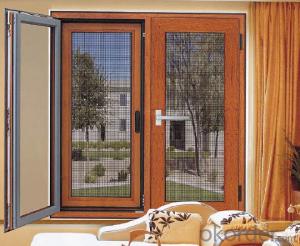10 Sheets of Anodized Golden Aluminum Profiles for Casement Window Ghana
- Loading Port:
- Shanghai
- Payment Terms:
- TT OR LC
- Min Order Qty:
- 20 m.t.
- Supply Capability:
- 2000 m.t./month
OKorder Service Pledge
OKorder Financial Service
You Might Also Like
1.Structure of Anodized Golden Aluminium Profiles Description:
Anodizing (also spelled anodising, particularly in the UK and Australia) is an electrolytic passivation process used to increase the thickness of the natural oxide layer on the surface of metal parts. Anodized aluminium surfaces, for example, are harder than aluminium but have low to moderate wear resistance that can be improved with increasing thickness or by applying suitable sealing substances.
2.Main Features of the Anodized Golden Aluminium Profiles:
High corrosion-resistance;
weather-resistance;
heat-resistance;
alkali-resistance and impact-resistance properties.
3.Anodized Golden Aluminium Profiles Images:

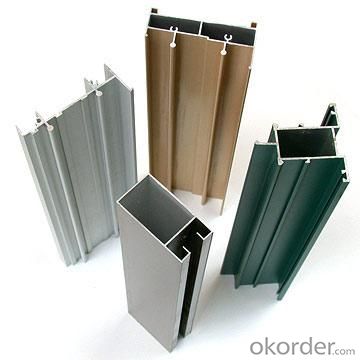
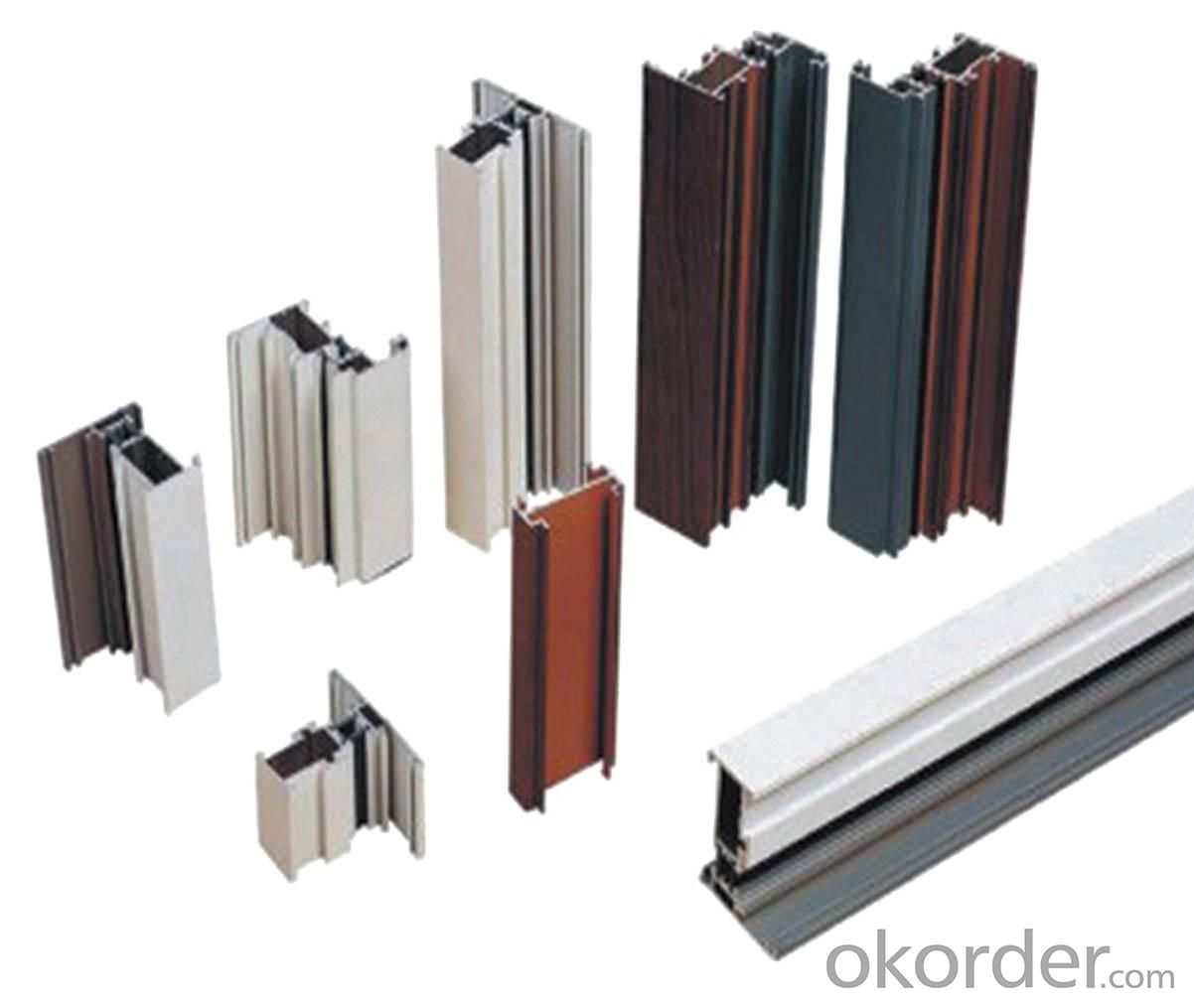
4.Anodized Golden Aluminium Profiles Specification:
1. Material: 6063,6061,6060,6005,6005A,etc.
2. Temper: T5 or T6
3. Finish: Mill finish, anodizing,powder coating, electrophoresis, wooden transfer or pvdf/carbon-flouride coated, polishing,brushing,sand blasting
4. Various colors: Silver,bronze,black,gold,blue,grey,champagne,bright,etc.
5. Machining: Cutting,punching,drilling,tapping,milling,bending,welding,CNC etc.
5.FAQ:
①How about your company?
A world class manufacturer & supplier of castings forging in carbon steel and alloy steel,is one of the large-scale professional investment casting production bases in China,consisting of both casting foundry forging and machining factory. Annually more than 8000 tons Precision casting and forging parts are exported to markets in Europe,America and Japan. OEM casting and forging service available according to customer’s requirements.
②How to guarantee the quality of the products?
We have established the international advanced quality management system,every link from raw material to final product we have strict quality test;We resolutely put an end to unqualified products flowing into the market. At the same time, we will provide necessary follow-up service assurance.
- Q: What are the standard dimensions of aluminum sheets?
- The standard dimensions of aluminum sheets vary depending on the specific application and industry. However, common sizes for aluminum sheets typically range from 0.02 to 0.25 inches in thickness and from 24 to 48 inches in width and length.
- Q: How do you ensure the surface quality of aluminum sheets?
- To ensure the surface quality of aluminum sheets, several steps can be taken. Firstly, proper handling and storage practices should be implemented to prevent any physical damage or scratches to the sheets. Secondly, thorough cleaning and surface preparation techniques should be employed to remove any contaminants or oxidation from the surface. This can include processes like degreasing, etching, or mechanical finishes. Finally, quality control measures such as visual inspections, surface roughness testing, or even automated systems can be utilized to ensure that the aluminum sheets meet the desired surface quality standards.
- Q: Can aluminum sheets be used for balcony railings?
- Yes, aluminum sheets can be used for balcony railings. Aluminum is a lightweight and durable material that is commonly used for this purpose due to its resistance to rust and corrosion. Additionally, aluminum can be easily shaped and customized to meet specific design requirements, making it a popular choice for balcony railings.
- Q: Can aluminum sheets be used for cladding?
- Yes, aluminum sheets can be used for cladding purposes. Aluminum is a popular choice for cladding due to its lightweight, durability, and corrosion resistance, making it suitable for both interior and exterior applications.
- Q: Can aluminum sheet be used for electrical enclosures?
- Indeed, electrical enclosures can indeed utilize aluminum sheet. The remarkable conductivity, lightweight composition, and resistance to corrosion render aluminum a favored option for electrical enclosures. It effectively safeguards against electromagnetic interference and possesses commendable heat dissipation properties. Moreover, aluminum boasts malleability, enabling the production of intricate shapes and designs. In summary, aluminum sheet is a fitting material for electrical enclosures and finds widespread application in diverse industries like electronics, telecommunications, and power distribution.
- Q: Can aluminum sheet be used for roofing?
- Yes, aluminum sheet can be used for roofing. Aluminum is a popular choice for roofing due to its numerous advantages. Firstly, aluminum is lightweight, making it easier to install and reducing the load on the structure of the building. Secondly, aluminum is highly durable and resistant to corrosion, which means it can withstand harsh weather conditions, such as heavy rain, snow, and UV radiation. Additionally, aluminum is non-combustible, making it a safe choice for roofing. Furthermore, aluminum is an environmentally friendly material as it is 100% recyclable, reducing its impact on the environment. Overall, aluminum sheet is a reliable and efficient option for roofing applications.
- Q: What are the different methods of surface etching aluminum sheets?
- There are several different methods for surface etching aluminum sheets, each with its own advantages and specific applications. Some of the most common methods include chemical etching, laser etching, and mechanical etching. Chemical etching involves using a chemical solution to selectively remove the surface of the aluminum sheet. This method is highly precise and can achieve intricate designs or patterns. It is often used for decorative purposes, such as creating logos or artwork on aluminum signage or nameplates. Additionally, chemical etching can be used to create functional features, such as improving adhesion for paint or coatings. Laser etching, on the other hand, uses a high-powered laser to remove material from the surface of the aluminum sheet. This method is extremely precise and can create very fine details. It is commonly used for marking or engraving aluminum sheets, such as serial numbers, barcodes, or product identification. Laser etching is also a non-contact process, which means it does not cause any physical damage to the sheet. Mechanical etching, or abrasive blasting, involves using an abrasive material to physically remove the surface of the aluminum sheet. This method is typically used for larger-scale applications, such as creating a textured or matte finish on aluminum panels or sheets. Mechanical etching can also be used to remove any surface imperfections or contaminants, preparing the aluminum sheet for further processing or finishing. In summary, the different methods of surface etching aluminum sheets include chemical etching, laser etching, and mechanical etching. Each method offers unique advantages and is used for specific applications, ranging from decorative designs to functional markings or surface treatments.
- Q: Are aluminum sheets suitable for marine hulls?
- Yes, aluminum sheets are suitable for marine hulls. Aluminum is lightweight, durable, and corrosion-resistant, making it an excellent choice for boat hull construction. It offers good strength-to-weight ratio, enhances fuel efficiency, and requires less maintenance compared to other materials.
- Q: Are the aluminum sheets available in different grades?
- Yes, aluminum sheets are available in different grades. Aluminum is commonly used in various industries due to its lightweight, corrosion resistance, and strength-to-weight ratio. Different grades of aluminum sheets are designed to meet specific requirements for various applications. The most common grades include 1100, 3003, 5052, 6061, and 7075. Each grade has its own unique properties and characteristics, such as strength, formability, weldability, and machinability. The choice of grade depends on factors such as the intended use, environmental conditions, and desired properties of the finished product.
- Q: Are aluminum sheets recyclable?
- Indeed, aluminum sheets can be recycled. Aluminum, as a material, is highly recyclable, and the recycling procedure for aluminum sheets is notably straightforward and efficient. The process of recycling aluminum sheets entails melting the metal and shaping it into fresh sheets or other aluminum items. When compared to manufacturing new aluminum, the recycling process for aluminum demands significantly less energy, which renders it an environmentally conscious choice. Moreover, recycling aluminum sheets aids in the preservation of natural resources and diminishes the volume of waste deposited in landfills. Consequently, it is strongly recommended to recycle aluminum sheets whenever feasible, as it contributes to a more sustainable and eco-friendly future.
Send your message to us
10 Sheets of Anodized Golden Aluminum Profiles for Casement Window Ghana
- Loading Port:
- Shanghai
- Payment Terms:
- TT OR LC
- Min Order Qty:
- 20 m.t.
- Supply Capability:
- 2000 m.t./month
OKorder Service Pledge
OKorder Financial Service
Similar products
Hot products
Hot Searches
Related keywords
